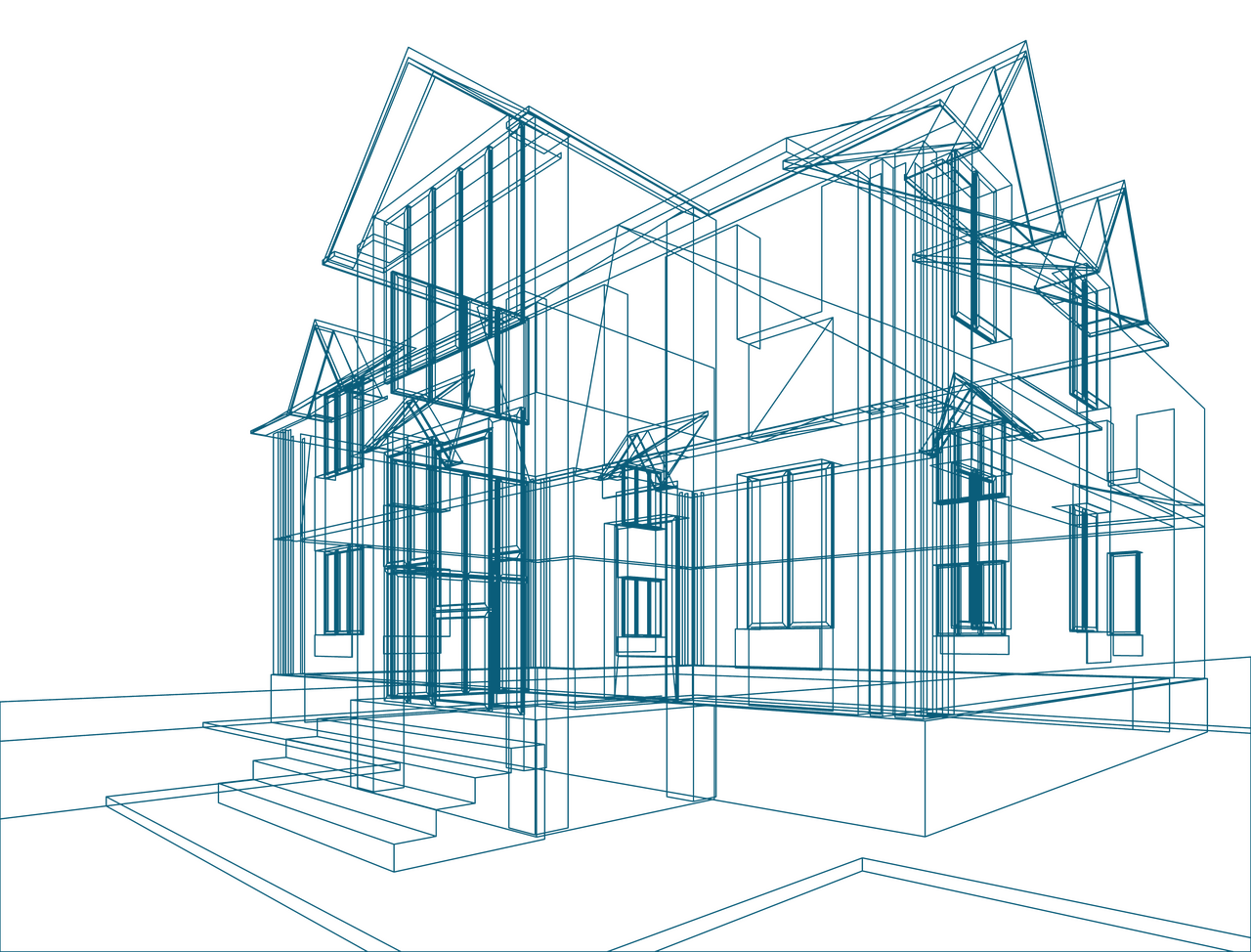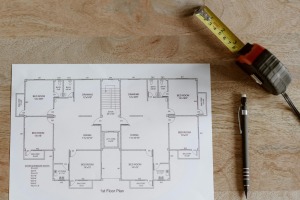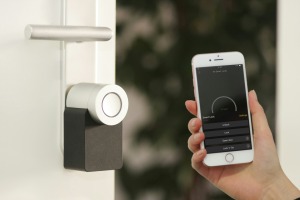


News I published 15 June 2023
The percentage of installers who also install smart products has stagnated
The demand for smart building products is greater than ever, and not just because they offer more control or comfort. Smart solutions can also contribute to more efficient energy consumption, leading to significant energy and cost savings. In times of high energy prices and a general focus on sustainability, these products are shifting from luxury to necessity. The increasing demand comes as no surprise.
What is surprising, however, is that the percentage of HVAC installation companies that also install smart products has not increased on average but rather stagnated. This is evident from the results of the European Mechanical Installation Monitor, an ongoing survey among HVAC installers in six European countries. How can this stagnation be explained when installers are witnessing a rising demand for smart product installations?
The steady increase in the number of installers implementing smart products has come to a halt
The development of the demand for smart building products has always appeared more like a slow evolution than a rapid revolution. In recent years, we have observed a steady growth in the percentage of installation companies involved in smart product installations.
However, our recent findings indicate that when looking at all six countries together, the average growth has stagnated. While the United Kingdom and Germany still show significant growth, the overall growth is marginal, and Poland even demonstrates a decline. At the same time, the same research reveals a net increase in the demand for smart building products in most countries. So, how is it that the percentage of installers involved in these installations is not keeping pace?
There is plenty of installation work to be undertaken
Somewhere between 50% and 60% of all installation companies are also engaged in the installation of smart products. This is approximately the same percentage of companies that express a positive outlook on the development of smart products. It appears that installers who hold a more neutral or negative view of smart products are less likely to install them.
It is important to understand that starting to install smart products often requires an investment in training due to the complexity of the systems and technology involved. Additionally, inexperienced installers may encounter time-consuming issues during their initial installations. Given the scarcity of time, the investment of time may not seem worthwhile.
Time is scarce within the installation sector due to high demand. Particularly in the HVAC sector, there is significant pressure resulting from both the energy transition and severe labor shortages. Therefore, there is ample demand for installation work without smart products. For installers who have little affinity for smart products, there is no urgency to start working with them.
Installers who do install smart products are doing so more frequently
While the percentage of installers involved in smart product installations remains relatively stable, the high demand necessitates an increased number of smart product installations. As a result, we observe that installers who already install smart products are doing so more frequently. For installers for whom smart products were previously an exception, the installation of such products is becoming more commonplace.
This trend is expected to continue in the coming years. We anticipate that the percentage of installation companies engaged in smart products will remain more or less the same, but they will install a greater number of smart products. For a comprehensive overview of installation companies and their involvement in the installation of smart products in six European countries, we refer to the European Mechanical Installation Monitor by USP Marketing Consultancy.

Read more


16 October 2024 I Henri Busker
The Building Blocks of Prefab: Key Materials


11 October 2024 I Dirk Hoogenboom
Rethinking European Construction: Prefab Trends


24 September 2024 I Jeroen de Gruijl
Blockchain, AI, AR and IoT – Architects’ Outlook


24 September 2024 I Dirk Hoogenboom
Future Developments in Construction Still Far Away

Fresh Insights Await
Our latest reports
Delve into the newest findings across various market segments, crafted for a cutting-edge overview. Explore our latest reports, brimming with up-to-date data, trend analyses, and in-depth examinations, all tailored to provide you with a comprehensive understanding of the current market dynamics.
Construction
Home Improvement
Installation
Special reports
Construction
Prefab H1 2024
2024 63 pages
Discover the adoption rate and benefits of prefabrication technology among European contractors in H1 2024. Understand the driving forces behind prefab usage and its impact on project efficiency and cost-saving.
6,300 Euro
Construction
Sustainability 2024
2024 72 pages
Painter Insight Monitor 2024 will focus on understanding the specific needs, preferences, and challenges faced by painters when it comes to sustainable products.
10,815 Euro
Construction
Importance of branding & branding funnels 2024
2024 62 pages
This report offers a comprehensive overview of importance of branding and branding funnels with a specific focus on European handymen. Brand behaviour is covered for each country, showing purchasing power, differences regarding quality, sustainability, online shopping, innovation-habit and private labels,
8,400 Euro
Construction
Future of construction Q2 2024
2024 82 pages
Explore the evolving future in construction sector among European architects in Q2 2024. Delve into the factors driving material preferences and the impact on construction aesthetics and sustainability.
1,850 Euro
Construction
Trends in material usage Q1 2024
2024 102 pages
Explore the evolving trends in material usage among European architects in Q1 2024. Delve into the factors driving material preferences and the impact on construction aesthetics and sustainability.
1,850 Euro
Construction
Media orientation H2 2021
2024 161 pages
Explore the media engagement patterns of contractors to optimize your marketing strategies. Dive into a pool of insights that unveils how contractors interact with different media channels.
6,300 Euro
Home Improvement
Purchase channels Q2 2024
2024 90 pages
The European Home Improvement Monitor offers valuable insights on purchase channels in the European home improvement industry, examining the evolving preferences and behaviors of consumers across traditional retail and emerging online platforms.
3,150 Euro
Home Improvement
Sustainability Q1 2024
2024 81 pages
Delve into sustainability trends in the home improvement sector in Q1 2024. Discover consumer preferences and the shift towards eco-friendly home improvement solutions.
3,150 Euro
Home Improvement
DIY versus DIFM Q4 2021
2024 113 pages
This report is a must-have if you’re in the home improvement industry. It provides a wealth of information on the behaviour of DIY and DIFM consumers, their motivations, and the factors that influence their purchasing decisions.
3,150 Euro
Home Improvement
DIY or DIFM Q4 2023
2024 70
Explore the prevailing trends between DIY and DIFM in Q4 2023. Understand consumer preferences and the factors influencing their choice between DIY and DIFM.
3,150 Euro
Home Improvement
Branding Q3 2023
2023 93 pages
This report offers an extensive overview of the home improvement industry, with a focus on branding and the most popular brands within different categories. Within this report, you will gain insights into how customers perceive home improvement brands and what motivates them to buy certain products.
3,150 Euro
Home Improvement
Purchase channels Q2 2023
2023 114 pages
The European Home Improvement Monitor offers valuable insights on purchase channels in the European home improvement industry, examining the evolving preferences and behaviors of consumers across traditional retail and emerging online platforms.
3,150 Euros
Installation
Smart & Connected Products Q2 2024
2024 120 pages
This report provides a comprehensive view of the attitudes of installers toward smart building solutions, specifically among electrical installers and their clients. In the report, you will find insights into the installers' experiences with installing smart products and the willingness of end users to invest in such solutions, as well as their motivations and pain points.
3,150 Euro
Installation
Smart and connected products Q2 2024
2024 129
This report provides a comprehensive view of the attitudes of installers toward smart building solutions, specifically among HVAC installers, plumbers and their clients. In the report, you will find insights into the installers' experiences with installing smart products and the willingness of end users to invest in such solutions, as well as their motivations and pain points.
3,150 Euro
Installation
BIM Q1 2024
2024 84 pages
The European Mechanical Installation Monitor report provides a detailed analysis of the plumbing and HVAC industry. This report specifically focuses on BIM adaptation in the industry.
2,650 Euro
Installation
Sustainability Q1 2024
2024 99 pages
The European Electrical Installation Monitor report provides a detailed analysis of the sustainable solutions in the installation industry. This report specifically focuses on sustainability aspects in the industry.
3,150 Euro
Installation
Challenges toward sustainable future Q4 2021
2024 111 pages
2,650 Euro
Installation
Purchase channels Q4 2021
2024 106 pages
Delve into the training needs within the electrical installation sector. Understand the areas requiring skill development to meet the evolving demands of the industry.
3,150 Euro
Special reports
European Sustainability Report 2024
2024 51 pages
This report provides in-depth insights based on triangulation of key market information and data as well as data from USP Marketing Consultancy’s key monitors that are carried out year in, year out. The focus of this report is on the most important stakeholders within the construction industry, namely architects, contractors, electrical and HVAC installers within The United Kingdom, The Netherlands, Belgium, Germany, Poland, France, Italy, and Spain.
3,950 Euro








